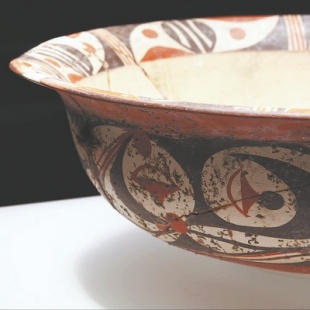Henan artifacts bring early civilization 'to life'


From an aerial view, the 19,700-square-meter structure adopts a design strategy of "sinking into the earth, integrating landscapes, and harmonizing with the environment", according to the museum introduction.
Upon entering, visitors walk alongside rammed-earth walls that visually simulate the layered sedimentation of the Yellow River, gradually descending from ground level to underground — creating a sense of "folded time and space", Hu adds.
A striking exhibit is a painted pottery twin pot unearthed in 1972. It used to be on display at the Henan Museum, in Zhengzhou, for over 50 years.
"The pot is the 'cultural ambassador' of the Dahecun," Hu says. "Its return completes the historical narrative of the site."
Crafted from red pottery and adorned with parallel-line patterns, the pot's unique side-by-side design not only reflects the ceremonial culture of tribal alliances 6,000 years ago but also stands as a masterpiece of prehistoric artistry. Its minimalist style and exquisite craftsmanship continue to amaze viewers today.
"The distinctive twin-pot design makes this artifact an 'emblem of friendship'," says Shi Mengru, a staff member at the museum.





































